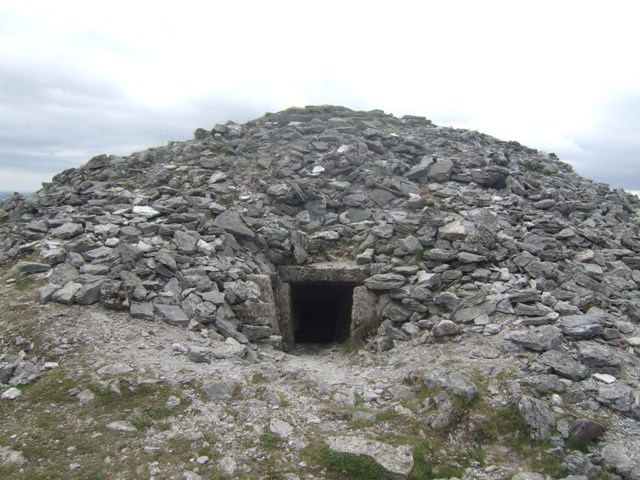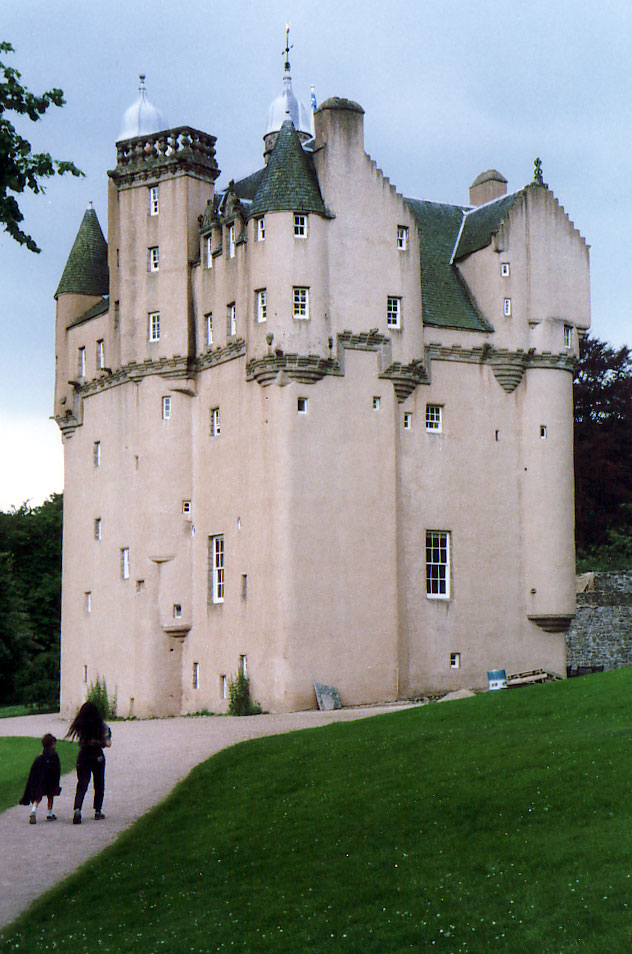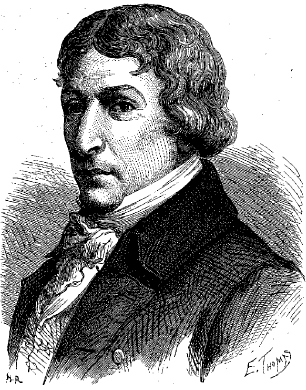|
Cunninghame Graham Memorial
The Cunninghame Graham Memorial is a stone monument dedicated to the memory of 'Don Roberto' Robert Bontine Cunninghame Graham (1852–1936) 15th of Gartmore and 19th of Ardoch, a Scottish author, politician, traveller and horseman . The cairn was designed by Alexander Wright and was erected in June 1937, a year after Cunninghame Graham's death, on land that he had given to the National Trust for Scotland at Castlehill, Dumbarton, Castlehill, Dumbarton. The monument, which is built of Scottish stone, contains stones from Argentina (top), Uruguay (left) and Paraguay (right), countries in which Don Roberto had lived in his youth and about which he had written. Between these stones is a medallion of Cunninghame Graham (in his latter years) by the Liverpool born artist Alexander Proudfoot, RSA, who taught sculpture at Glasgow School of Art. Below the medallion is an epitaph, which reads: "Robert Bontine Cunninghame Graham 1852–1936 – Famous Author – Traveller and Horseman – ... [...More Info...] [...Related Items...] OR: [Wikipedia] [Google] [Baidu] |
Gartmore Memorial 0001
Gartmore (Scottish Gaelic ''An Gart Mòr'') is a village in the Stirling council area, Scotland. It is a village with a view of the Wallace Monument in Stirling, almost 25 miles away. In the Land Registration County of Perthshire, it is one mile from the A81 road, A81 Glasgow to Aberfoyle, Scotland, Aberfoyle road, three miles south of Aberfoyle. The Rob Roy Way walking route passes nearby. One of the villages more famous residents was Robert Bontine Cunninghame Graham at Gartmore House. External links Lochlomond-Trossachs - Gartmore [...More Info...] [...Related Items...] OR: [Wikipedia] [Google] [Baidu] |
Robert Bontine Cunninghame Graham
Robert Bontine Cunninghame Graham (24 May 1852 – 20 March 1936) was a Scottish politician, writer, journalist and adventurer. He was a Liberal Party Member of Parliament (MP); the first ever socialist member of the Parliament of the United Kingdom; a founder, and the first president, of the Scottish Labour Party; a founder of the National Party of Scotland in 1928; and the first president of the Scottish National Party in 1934. Cunninghame Graham was the eldest son of Major William Bontine of the Renfrew Militia and formerly a Cornet in the Scots Greys with whom he served in Ireland. His mother was the Hon. Anne Elizabeth Elphinstone-Fleeming, daughter of Admiral Charles Elphinstone-Fleeming of Cumbernauld and a Spanish noblewoman, Doña Catalina Paulina Alessandro de Jiménez, who reputedly, along with her second husband, Admiral James Katon, heavily influenced Cunninghame Graham's upbringing. Thus the first language Cunninghame Graham learned was his mother's maternal t ... [...More Info...] [...Related Items...] OR: [Wikipedia] [Google] [Baidu] |
Cairn
A cairn is a human-made pile (or stack) of stones raised for a purpose, usually as a marker or as a burial mound. The word ''cairn'' comes from the (plural ). Cairns have been and are used for a broad variety of purposes. In prehistory, they were raised as markers, as memorials and as burial monuments (some of which Chambered cairn, contained chambers). In the modern era, cairns are often raised as landmarks, especially to mark the summits of mountains, and as Trail blazing, trail markers. They vary in size from small piles of stones to entire artificial hills, and in complexity from loose conical rock piles to elaborate megalithic structures. Cairns may be painted or otherwise decorated, whether for increased visibility or for religious reasons. History Europe The building of cairns for various purposes goes back into prehistory in Eurasia, ranging in size from small rock sculptures to substantial human-made hills of stone (some built on top of larger, natural hills). ... [...More Info...] [...Related Items...] OR: [Wikipedia] [Google] [Baidu] |
National Trust For Scotland
The National Trust for Scotland () is a Scottish Building preservation and conservation trusts in the UK, conservation organisation. It is the largest membership organisation in Scotland and describes itself as "the charity that cares for, shares and speaks up for Scotland's magnificent heritage". The trust owns and manages around 130 properties and of land, including List of castles in Scotland, castles, ancient small dwellings, historic sites, Gardens in Scotland, gardens, coastline, mountains and countryside. It is similar in function to the National Trust, which covers England, Wales, and Northern Ireland, and to National trust, other national trusts worldwide. History The trust was established in 1931 as the "National Trust for Scotland for Places of Historic Interest or Natural Beauty", following discussions held in the smoking room of Pollok House. The Trust was incorporated on 1 May 1931, with John Stewart-Murray, 8th Duke of Atholl being elected as its first presiden ... [...More Info...] [...Related Items...] OR: [Wikipedia] [Google] [Baidu] |
Castlehill, Dumbarton
Castlehill is an area of Dumbarton in the West Dunbartonshire area of Scotland. Located in the Western part of the town next to the Brucehill area, Castlehill was built as a council run housing scheme. Many of the houses have subsequently been bought by the tenants, reducing the number of houses still in the tenure of the local authority. This area of Dumbarton also has two Primary schools, St. Michaels Primary & Dalreoch Primary. Castlehill is the former site of a castle dating from several hundred years ago. There is the suggestion that this may have been the site of the manor house that Robert the Bruce Robert I (11 July 1274 – 7 June 1329), popularly known as Robert the Bruce (), was King of Scots from 1306 until his death in 1329. Robert led Kingdom of Scotland, Scotland during the First War of Scottish Independence against Kingdom of Eng ... built in 1326 and died in 1329, however it seems more likely such a manor house would have been closer to the River Leve ... [...More Info...] [...Related Items...] OR: [Wikipedia] [Google] [Baidu] |
Dumbarton
Dumbarton (; , or ; or , meaning 'fort of the Britons (historical), Britons') is a town in West Dunbartonshire, Scotland, on the north bank of the River Clyde where the River Leven, Dunbartonshire, River Leven flows into the Clyde estuary. In 2006, it had an estimated population of 19,990. Dumbarton was the capital of the ancient Kingdom of Strathclyde, and later the county town of Dunbartonshire. Dumbarton Castle, on top of Dumbarton Rock, dominates the area. Dumbarton was a royal burgh between 1222 and 1975. Dumbarton emerged from the 19th century as a centre for shipbuilding, glassmaking, and whisky production. However, these industries have since declined, and Dumbarton today is increasingly a commuter town for Glasgow east-southeast of it. Dumbarton F.C. is the local football club. Dumbarton is home to BBC Scotland's drama studio. History Dumbarton history goes back at least as far as the Iron Age and probably much earlier. It has been suggested that in Ancient Rom ... [...More Info...] [...Related Items...] OR: [Wikipedia] [Google] [Baidu] |
Glasgow School Of Art
The Glasgow School of Art (GSA; ) is a higher education art school based in Glasgow, Scotland, offering undergraduate degrees, post-graduate awards (both taught and research-led), and PhDs in architecture, fine art, and design. These are all awarded by the University of Glasgow. The school is housed in a number of buildings around Renfrew Street in the centre of Glasgow, upon Garnethill, an area first developed by William Harley of Blythswood Hill in the early 1800s. The most famous of its buildings was designed by Charles Rennie Mackintosh in phases between 1896 and 1909. The eponymous Mackintosh Building soon became one of the city's iconic landmarks, of international fame. It is a pioneer of the Modern Style (British Art Nouveau style). The building was severely damaged by fire in May 2014 and destroyed by a second fire in June 2018, with only the burnt-out shell remaining. Plans are in place for its rebuilding in accordance with Charles Rennie Mackintosh's style and content ... [...More Info...] [...Related Items...] OR: [Wikipedia] [Google] [Baidu] |
Epitaph
An epitaph (; ) is a short text honoring a deceased person. Strictly speaking, it refers to text that is inscribed on a tombstone or plaque, but it may also be used in a figurative sense. Some epitaphs are specified by the person themselves before their death, while others are chosen by those responsible for the burial. An epitaph may be written in prose or in poem verse. Most epitaphs are brief records of the family, and perhaps the career, of the deceased, often with a common expression of love or respect—for example, "beloved father of ..."—but others are more ambitious. From the Renaissance to the 19th century in Western culture, epitaphs for notable people became increasingly lengthy and pompous descriptions of their family origins, career, virtues and immediate family, often in Latin. Notably, the Laudatio Turiae, the longest known Ancient Roman epitaph, exceeds almost all of these at 180 lines; it celebrates the virtues of an honored wife (sometimes identified, but ... [...More Info...] [...Related Items...] OR: [Wikipedia] [Google] [Baidu] |
Duke Of Montrose
Duke of Montrose (named for Montrose, Angus) is a title that has been created twice in the Peerage of Scotland. The title was created anew in 1707, for James Graham, 1st Duke of Montrose, James Graham, 4th Marquess of Montrose, great-grandson of famed James Graham, 1st Marquess of Montrose. Montrose was elevated as a reward for his important support of the Acts of Union 1707, Act of Union. It has remained since then in the Graham family, tied to the Scottish clan chief, chieftainship of Clan Graham. The Duke's subsidiary titles are: Marquess of Montrose (created 1644), Marquess of Graham and Buchanan (1707), Earl of Montrose (1503), Earl of Kincardine (1644), Earl Graham (1722), Viscount Dundaff (1707), Lord Graham (1445), Lord Graham and Mugdock (1644), Lord Aberruthven, Mugdock and Fintrie (1707) and Baron Graham, of Belford (1722). The titles of Earl Graham and Baron Graham are in the Peerage of Great Britain; the rest are in the Peerage of Scotland. The eldest son of the Duk ... [...More Info...] [...Related Items...] OR: [Wikipedia] [Google] [Baidu] |
Alberto Guani
Alberto Guani Carrara (14 June 1877 – 26 November 1956) was a Uruguayan jurist, diplomat and the Vice President and President of the Senate from 1943 to 1947. Alberto Guani was born in Montevideo on 14 June 1877. He studied law, and became a well-known lawyer specializing in International Law. He studied law in Montevideo and, after obtaining a doctorate in law, he taught at the University of Montevideo. Early in his career Dr. Guani wrote about political and economic issues at El Siglo and El Tiempo newspapers, as well as writing for other publications. After becoming a lawyer, Dr. Guani partnered with Dr. Eduardo Acevedo and established his law firm, taking the first divorce cases in the country since divorce had just been legalised by the progressive José Batlle y Ordóñez presidency. Career In Uruguayan politics, Guani was a member of the Colorado Party. As a member of the Colorado Party, Guani began his parliamentary career in 1907. He was elected as State Representati ... [...More Info...] [...Related Items...] OR: [Wikipedia] [Google] [Baidu] |
Aimé Tschiffely
Aimé () is a French masculine given name. The feminine form is Aimée, translated as "beloved". Aimé may refer to: Given name * Saint Amatus or Saint Aimé (died 690), Benedictine monk, saint, abbot and bishop in Switzerland * Aimé, duc de Clermont-Tonnerre (1779–1865), French general, Minister of the Navy and the Colonies and Minister of War * Aimé Adam (1913–2009), Canadian politician * Aimé Anthuenis (born 1943), Belgian former football coach and player * Aimé Barelli (1917–1995), French jazz trumpeter, vocalist and bandleader * Aimé Barraud (1902–1954), Swiss painter * Aimé Bazin (1904–1984), French art director * Aimé Majorique Beauparlant (1864–1911), Canadian politician * Aimé Bénard (1873–1938), Canadian politician * Aimé Bergeal (1912–1973), French politician * Aimé Boji, Congolese politician, member of the National Assembly since 2006 * Aimé Bonpland (1773–1858), French explorer and botanist * Aimé Boucher (1877–1946), Canadian p ... [...More Info...] [...Related Items...] OR: [Wikipedia] [Google] [Baidu] |
Gartmore
Gartmore (Scottish Gaelic ''An Gart Mòr'') is a village in the Stirling council area, Scotland. It is a village with a view of the Wallace Monument in Stirling, almost 25 miles away. In the Land Registration County of Perthshire, it is one mile from the A81 Glasgow to Aberfoyle road, three miles south of Aberfoyle. The Rob Roy Way The Rob Roy Way is a Scotland, Scottish long distance footpath that runs from Drymen in Stirling (council area), Stirling to Pitlochry in Perth and Kinross. The path was created in 2002, and takes its name from Robert Roy MacGregor, Rob Roy MacG ... walking route passes nearby. One of the villages more famous residents was Robert Bontine Cunninghame Graham at Gartmore House. External links Lochlomond-Trossachs - Gartmore [...More Info...] [...Related Items...] OR: [Wikipedia] [Google] [Baidu] |





